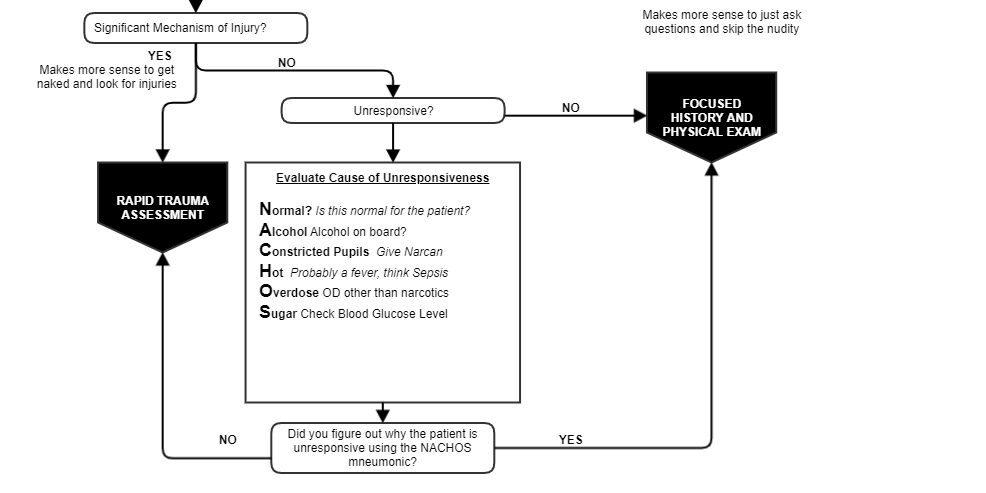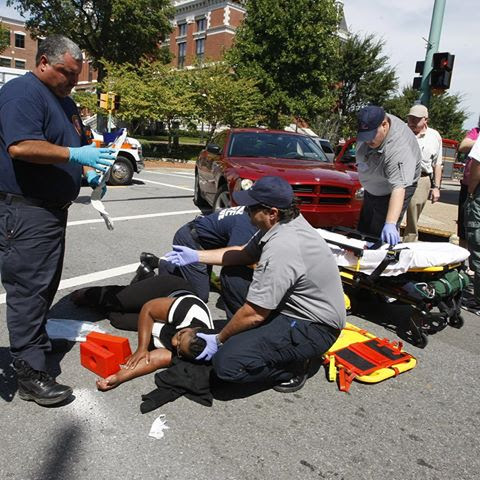When To Ask Questions Or Look For Injuries
Published (updated: ).

Asking questions is what medics do when there is no mechanism of injury
If the ambulance shows up to the scene of a 911 call and does not find a mechanism of injury, how would they know why they are even at the patient’s house? The answer is simple, ask the patient. If the patient can speak, surely they would tell the EMS crew what is wrong. What would such a conversation sound like?
The first question the medics ask is what is wrong. The answer to this question establishes a the most critical link in understanding what is wrong. The medical community refers to this complaint as the chief complaint. Patient’s often have more than one complaint. Pick the worst complaint or the complaint that is the most painful to the patient. It may not be possible to get the story directly from the patient, so questioning family members, bystanders, prison guards, or other public safety personnel. Other clues might be found in medical identification jewelry.

Once the chief complaint has been determined, it’s time to drill down on the details. The EMS crew needs to know more about the complaint:
- Onset – Did the pain increase slowly or did it start at the severity it is now?
- Provocation – What makes it worse? Also, what makes it better?
- Quality – Is the pain sharp or dull? Is it a burning sensation
- Severity – Can the patient rate the pain on a scale of 1 – 10
- Time – When did the pain begin.
When the medics need more information the best person to ask is the patient.
Looking for injuries is what medics do when there is a mechanism of injury

If the patient is injured from a significant injury, it would make more sense to look for injuries as opposed to ask questions. A head to toe examination would be better than asking the patient about their chief complaint. If the patient was injured from a significant mechanism of injury, they probably wouldn’t be able to reliably tell the medics where all they hurt.
